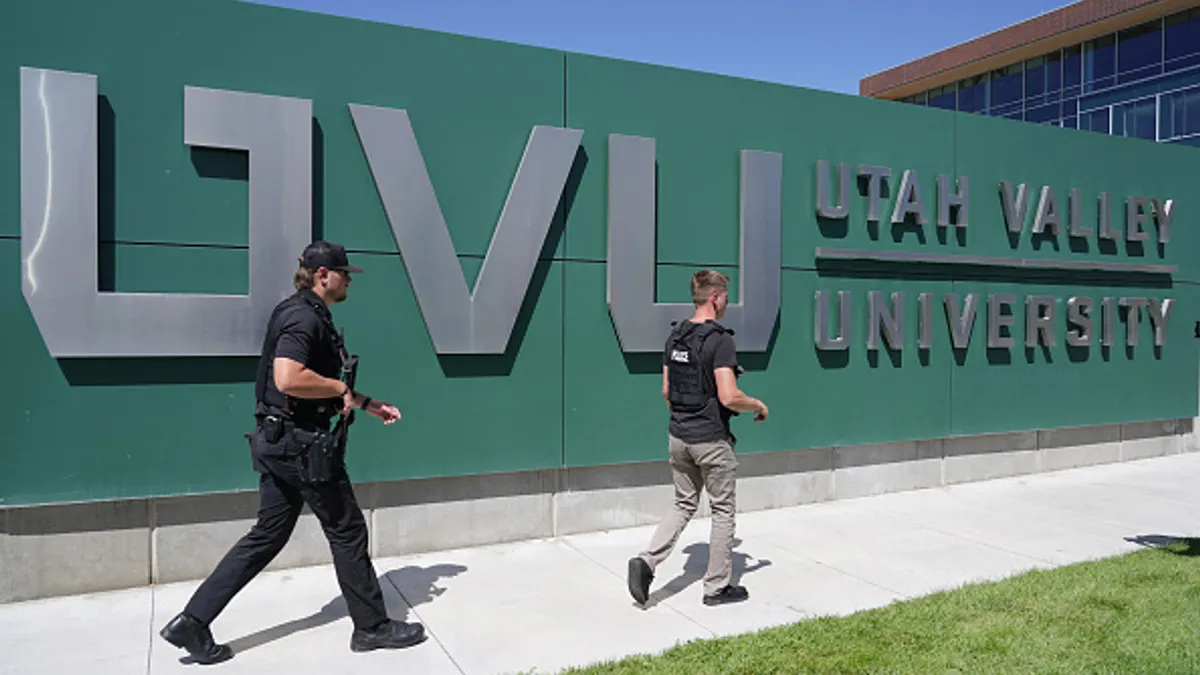This feature is part of a series focused exclusively on issues impacting higher ed IT administrators. To view the entire series, click here.
The path to the higher ed CIO's office can vary quite a bit from the position's corporate counterpart. While a fair share of college and university tech leaders have come from traditional IT backgrounds, many have also worked their way up through the faculty ranks.
And given higher ed's mission, doing so brings significant benefits both to their decisions as CIOs and their continuing work in the classroom.
"I think if you have stood in front of a room of expectant students, struggling to get the technology to work as the minutes tick away — and as you think about all the material you want to cover and the experiences you want the students to have — that really changes your perspective when you think about classroom technology," said Dr. Michael Berman, vice president for technology and communication and CIO at California State University Channel Islands. "The imperatives of simplicity and reliability start to take precedence over anything else."
How classroom experience benefits the higher ed CIO
For University of Dayton Associate Provost and CIO Dr. Thomas Skill, who spent around 14 years as communication faculty, the ascension to the university's tech chief began when he was a "noisy" department chair saying to the administration, "Hey, guys. We need to quickly think about how we need to be supporting our students better so they're more career-ready."
Before the university's CIO position was created, he served as head of academic technology and maintains that the position must be closely aligned with the chief academic officer over finance or any other department. "The only way IT is going to be a true partner in the success of the institution is that if it reports to where the mission sits," said Skill. "And since the mission of us sits with academics — in research and teaching and service — that was my first push. That's where it ought to report."
His academic background also served him well when it came to IT's overall organizational structure and approach to customer service. It was important to him that he move IT people away from just worrying about traditional IT uptime questions and have them take on a broader view. This involved introducing the "communication perspective" of taking people who are traditionally IT experts focused on solving IT problems, and who in many cases tended to be somewhat introverted or somewhat shy, and getting them to think more along the lines of how tech decisions would work with students and faculty.
"Ironically what happens now is when other units have big projects that they're trying to roll out, they'll come to us and ask IT if we'll help them communicate it to the campus," said Skill. "I almost have to laugh because I think the last place people look to get help in talking to customers is talking to an IT person."
These decisions, of course, aren't made in a vacuum. "We don't make those decisions by ourselves," noted Dr. Nelson Vincent, vice president for technology and CIO at the University of Cincinnati, and a former associate dean for research in the school's College of Education, Criminal Justice and Human Services. "That's a community process that involves faculty, staff, and students. You really do have to have a collaborative process to do that."
But that classroom background can also serve to provide plenty of trust and social capital when it comes to seeking faculty backing for those decisions. Berman, who rose through the ranks as a computer science professor, added that the CIO position tends to require at least a master's degree, making it possible to teach introductory or community college courses.
In fact, Berman recommends it when mentoring people who want to become CIO, because while IT chiefs can develop the empathy to relate with teachers, the firsthand experience tends to come in handy. "When I sit down in a meeting with faculty and they find out that I have that experience, it really changes the whole tenor of the conversation," said Berman. "I have a certain amount of credibility right away that I wouldn't have otherwise."
"It gives you an authenticity, because if you've never taught and you say to a faculty member, 'Yeah, I understand what you're going through,' it rings a little hollow. But if you've been there and you've done it, you're more likely to be believed and trusted."
Experiences as CIO improve approaches in the classroom
CIOs who continue to teach bring a number of benefits back to the classroom — most notably their practical experience.
"The fun part for me now is I have lots of great examples and stories about how this is meaningful in what they're studying," said Skill. "I think it's enriched what I can offer the students, because sometimes I think the students look at the academics, saying, 'Yeah, sure. You're just a college professor in a classroom. You don't really deal with the real world out there.' "
Skill is co-teaching a course this semester on cybersecurity and social engineering. With his experiences in IT administration, he can provide examples like one last year in which a student tried to use a key logger to steal a faculty member's credentials, detailing how the student was caught and how the university is using two-factor authentication to make it impossible for a key logger to be used successfully.
Berman noted also that simply seeing the career paths of former students, some of whom he's hired, has changed the way he thinks about teaching and the kinds of experiences he wants students to have.
And for Vincent, staying in the classroom is also a means to keep his ears to the ground, along with advising student organizations, student government, and other groups. "You can't wait for those things to come up to you," said Vincent. "You can't wait 'til you have a committee that's looking at classroom standards and what we're going to do next year and in five years. You really have to go looking for that information."
"It's that fine line between keeping up and running ahead. You really do have to keep up."
Would you like to see more education news like this in your inbox on a daily basis? Subscribe to our Education Dive email newsletter! You may also want to read Education Dive's look at what 6 higher ed CIOs wish they knew their first day on the job.

















